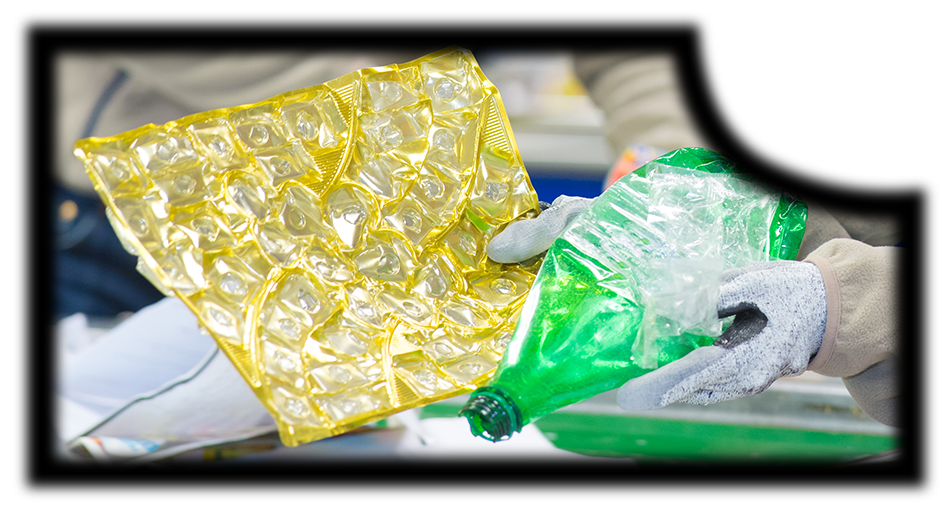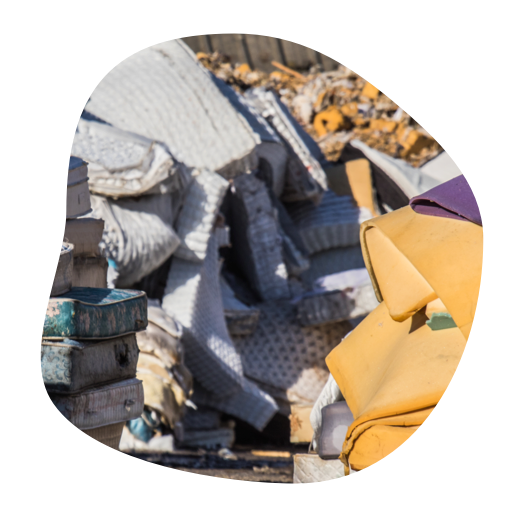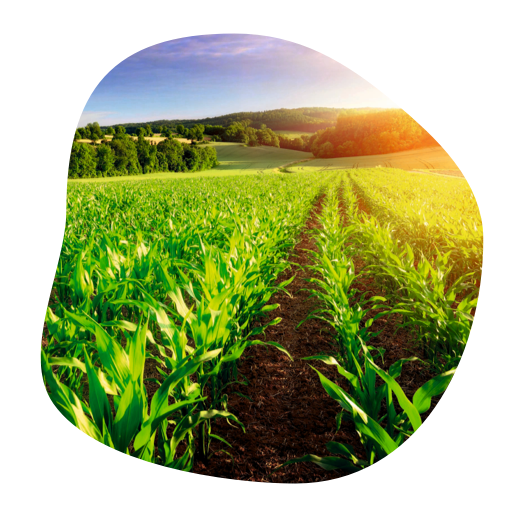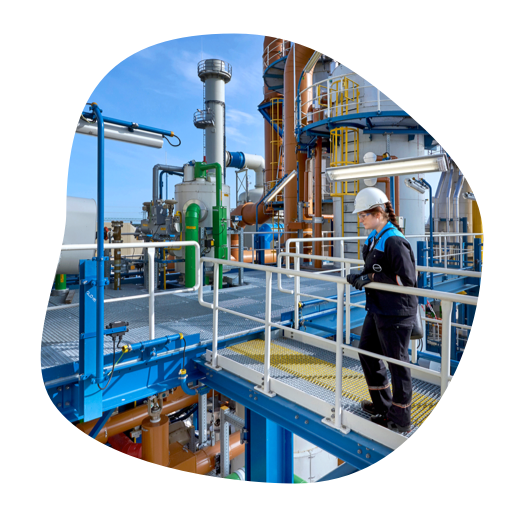Results
- No filter selected.
- en Magazine
- Magazine Accelerate
- Magazine Collaborate
- Magazine Innovate
- en Overview
- Overview Foreword
- Overview Key Data Covestro Group
- Overview Report Profile
- en To our Shareholders
- To our Shareholders Report of the Supervisory Board
- To our Shareholders Covestro on the Capital Market
- en Management Report
- Management Report Covestro Group at a Glance
- Covestro Group at a Glance Company Profile
- Covestro Group at a Glance Strategy
- Strategy Purpose and Vision
- Strategy Group Strategy
- Strategy Strategy of the Reportable Segments
- Covestro Group at a Glance Management
- Management Overview
- Management Business Performance
- Management Sustainability
- Management Corporate Policies
- Covestro Group at a Glance Circular Economy
- Covestro Group at a Glance Innovation
- Covestro Group at a Glance Employees
- Covestro Group at a Glance Integrated Management System for Health, Safety, Environment, Energy, and Quality
- Covestro Group at a Glance Safety
- Covestro Group at a Glance Environmental Protection
- Covestro Group at a Glance Sustainability in the Supply Chain
- Covestro Group at a Glance Social Responsibility
- Management Report Report on Economic Position
- Report on Economic Position Economic Environment
- Report on Economic Position Business Performance at a Glance
- Report on Economic Position Results of Operations, Financial Position, and Net Assets of the Covestro Group
- Results of Operations, Financial Position, and Net Assets of the Covestro Group Key data Covestro Group
- Results of Operations, Financial Position, and Net Assets of the Covestro Group Results of Operations
- Results of Operations, Financial Position, and Net Assets of the Covestro Group Financial Position
- Results of Operations, Financial Position, and Net Assets of the Covestro Group Net Assets
- Report on Economic Position Performance of the Reportable Segments
- Performance of the Reportable Segments Polyurethanes
- Performance of the Reportable Segments Polycarbonates
- Performance of the Reportable Segments Coatings, Adhesives, Specialties
- Report on Economic Position Results of Operations, Financial Position and Net Assets of Covestro AG
- Management Report Report on Future Perspectives and on Opportunities and Risks
- Report on Future Perspectives and on Opportunities and Risks Report on Future Perspectives
- Report on Future Perspectives and on Opportunities and Risks Opportunities and Risks Report
- Opportunities and Risks Report Overview
- Opportunities and Risks Report Group-Wide Opportunities and Risk Management System
- Opportunities and Risks Report Opportunities and Risks
- Management Report Corporate Governance
- Corporate Governance Overview
- Corporate Governance Declaration on Corporate Governance
- Corporate Governance Takeover-Relevant Information
- Corporate Governance Compliance
- Corporate Governance Compensation Report
- Compensation Report Overview
- Compensation Report Compensation of the Board of Management
- Compensation Report Compensation of former members of the Board of Management
- Compensation Report Compensation of the Supervisory Board
- Compensation Report Other information
- Management Report Disclosures on Sustainability Reporting
- Disclosures on Sustainability Reporting Overview
- Disclosures on Sustainability Reporting Nonfinancial Group statement
- Disclosures on Sustainability Reporting Recommendations of the Task Force on Climate-related Financial Disclosures (TCFD)
- Disclosures on Sustainability Reporting GRI Index
- en Financial Statements
- Financial Statements Covestro Group Consolidated Income Statement
- Financial Statements Covestro Group Consolidated Statement of Comprehensive Income
- Financial Statements Covestro Group Consolidated Statement of Financial Position
- Financial Statements Covestro Group Consolidated Statement of Cash Flows
- Financial Statements Covestro Group Consolidated Statement of Changes in Equity
- Financial Statements Notes to the Consolidated Financial Statements of the Covestro Group
- Notes to the Consolidated Financial Statements of the Covestro Group Principles and Methods
- Principles and Methods 1. General Information
- Principles and Methods 2. Effects of New Financial Reporting Standards
- Principles and Methods 3. Accounting Policies and Valuation Principles
- Principles and Methods 4. Change in Presentation for Rebates Granted to Customers and Trade Working Capital
- Principles and Methods 5. Effects of the Coronavirus Pandemic on Financial Reporting
- Principles and Methods 6. Segment and Regional Reporting
- Principles and Methods 7. Changes in the Scope of Consolidation
- Notes to the Consolidated Financial Statements of the Covestro Group Notes to the Income Statement
- Notes to the Income Statement 8. Sales
- Notes to the Income Statement 9. Other Operating Income
- Notes to the Income Statement 10. Other Operating Expenses
- Notes to the Income Statement 11. Personnel Expenses and Employee Numbers
- Notes to the Income Statement 12. Financial Result
- Notes to the Income Statement 13. Taxes
- Notes to the Income Statement 14. Earnings per Share
- Notes to the Consolidated Financial Statements of the Covestro Group Notes to the Statement of Financial Position
- Notes to the Statement of Financial Position 15. Goodwill and Other Intangible Assets
- Notes to the Statement of Financial Position 16. Property, Plant and Equipment
- Notes to the Statement of Financial Position 17. Investments Accounted for Using the Equity Method
- Notes to the Statement of Financial Position 18. Other Financial Assets
- Notes to the Statement of Financial Position 19. Inventories
- Notes to the Statement of Financial Position 20. Other Receivables
- Notes to the Statement of Financial Position 21. Equity
- Notes to the Statement of Financial Position 22. Provisions for Pensions and Other Post-employment Benefits
- Notes to the Statement of Financial Position 23. Other Provisions
- Notes to the Statement of Financial Position 24. Financing and Financial Liabilities
- Notes to the Statement of Financial Position 25. Other Liabilities
- Notes to the Statement of Financial Position 26. Financial Instruments
- Notes to the Statement of Financial Position 27. Contingent Liabilities and Other Financial Commitments
- Notes to the Statement of Financial Position 28. Legal Risks
- Notes to the Consolidated Financial Statements of the Covestro Group Other Information
- Other Information 29. Notes to the Statement of Cash Flows
- Other Information 30. Related Companies and Persons
- Other Information 31. Auditor’s Fees
- Other Information 32. Events after the End of the Reporting Period
- en Further Information
- Further Information Responsibility Statement
- Further Information Independent Auditor’s Report
- Further Information Limited Assurance Report of the Independent Auditor regarding the supplementary sustainability information
- Further Information Segment and Quarterly Overview
- Further Information Five-Year Summary
- Further Information Financial Calendar
Innovate
Developing a circular future

To become fully circular, it needs developments and advances in various areas. We need the ability to recycle any given material, for example. Raw materials must be based on renewable feedstock so as not to deplete the planet’s resources. And existing energy- and resource-intensive plants must be further optimized.

More than
One Life
The figures are shocking: Between 1950 and 2015, around 4.9 billion metric tons of plastic waste ended up in landfills and in the environment. And this problem will only get worse unless the world changes its approach radically. The solutions are obvious: We must make every effort to prevent waste by reusing it repeatedly over a long period. Unavoidable waste should not be carelessly discarded, but disposed of sensibly – and recycled wherever possible.
Rethink recycling
What sounds simple is, in fact, anything but: Only a tiny proportion of plastic waste can be easily recycled in the usual way – by mechanical means, which involves crushing, melting down and reforming the material. What’s more, some plastics can no longer be used for their original purpose following mechanical recycling. And mechanical recycling may not even be possible, for instance in the case of mixed plastic waste.

14 %
Only 14% of the 300 million metric tons of plastic waste are recycled each year.
An alternative is available in these instances: reducing old materials to their chemical components, from which new raw materials can be obtained. Covestro intends to pursue both options in a bid to give plastics more than one life: “We are researching new technologies for the chemical recycling of our materials in several projects, and are expanding established mechanical recycling in various markets,” says Covestro expert Dr. Catherine Lövenich.
The chemical approach is being explored by the PUReSmart European research project, among others. This involves six countries, three universities and six companies, including Covestro, and focuses on the recycling of flexible polyurethane foam, commonly used in mattresses and the like. The ambitious target: to recycle 90 percent of this material.

Three Clean Alternatives
Ideally, cars should no longer emit any CO2 whatsoever. On the contrary: They should be able to incorporate some instead – as an element of numerous automotive components. This is possible thanks to an innovative Covestro technology. We are now using CO2 to manufacture a key chemical in the production of foams, from which the Swiss company FoamPartner has recently started making components for automotive interiors, including arm rests and seat covers.
CO2, biomass and waste as raw materials
After mattresses and sports floors, the car is the latest field to be tapped for our CO2-based materials. Textiles and building insulation will follow. “With CO2 as a new raw material, we can save on crude oil in production, which benefits the climate,” says Covestro researcher Dr. Christoph Gürtler. “We are also circulating carbon – a significant contribution to the circular economy.”
1 %
of all the world’s plastics were based on biomass in 2019.
Covestro is also committed to the use of plants as another environmentally friendly source of carbon and a substitute for crude oil. Films and coating components produced in this way are already on the market. At the same time, the company has joined forces with partners to research further applications and sources for biomass, including municipal waste and wood waste. This trio of alternative raw materials is rounded out by end-of-life product waste. Because plastics are far too valuable to be simply discarded.
What do you think?
By what percentage is the global share of bio-based plastics set to increase annually by 2024?
Correct! The global share of bio-based plastics set to increase 3% annually by 2024.
Unfortunately not correct. The global share of bio-based plastics set to increase 3% annually by 2024.

Less is More
Up to 35 %
of CO2 emissions can be saved by Covestro’s new MDI production technology.
The rigid foam component MDI ensures that refrigerators and buildings worldwide are insulated in an energy-efficient manner. Accordingly, worldwide demand for MDI is growing steadily – and with it the requirements for energy-efficient and environmentally friendly production.
In 2020, Covestro reached an important milestone in this regard: The first industrial pilot plant for the production of MDI based on the novel AdiP technology opened in Brunsbüttel, Germany. AdiP stands for adiabatic-isothermal phosgenation and describes the technology’s main advantage: It uses process heat generated during the reaction, eliminating the need for external energy input.
Engineered sustainability
As a result, the production process significantly reduces energy consumption and CO2-emissions in MDI production. Thanks to the AdiP technology, up to 40 percent steam and 25 percent electricity can be saved per metric ton of MDI produced. CO2 emissions are thus reduced by up to 35 percent. At the same time, the production output of the plant increases by up to 50 percent. Thus, production plants can be built smaller to achieve the same output in future.
Teamwork made the dream work: “Innovations, especially in the field of process technology, are an important pillar in Covestro’s strategy to become fully circular. We worked intensively across sites on the development of AdiP,” says Dr. Klaus Schäfer, CTO at Covestro. “And I am convinced that together we will also successfully complete the pilot phase to enable the technology to be used in our global production network.”
